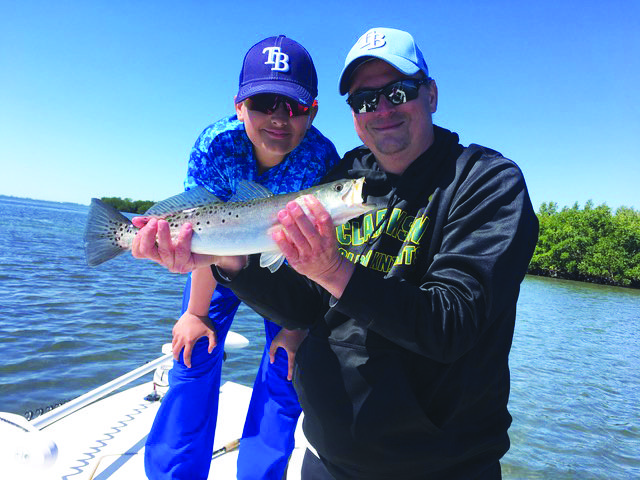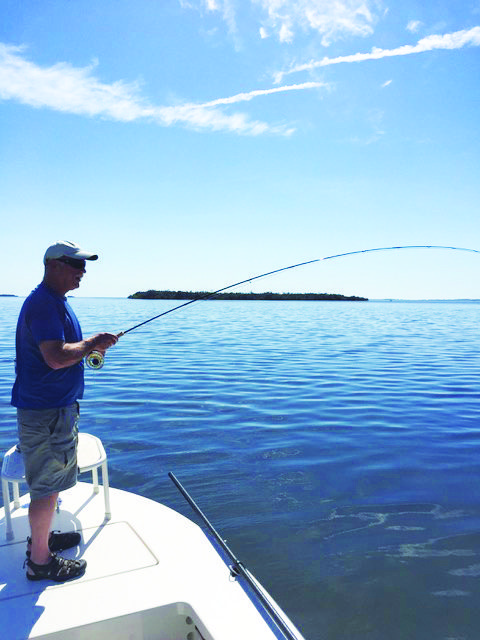By Capt. Mike Manis
Things are about to change and this month marks that beginning. We’re about to enter what could be considered a winter pattern on the flats, in and around the harbor. Intermittent northerly fronts combined with lower morning tides combine to bring this change. In addition to cooler temperatures that affect the fish, these winds push water out of the harbor escalating already low tides.

When the tide drops out the fish will move away from mangrove shorelines and have to drop into the deeper depressions or sand holes on the open flats. Also, as we get away from summer rain patterns, our water clears up and, on many flats, this is a sight fishing opportunity. Typically, the closer you get to the passes, the cleaner the water; however, even adjacent to the rivers, the water clarity is much improved this time of year. For a couple reasons, this is one of my favorite times of year to fish Pine Island Sound. First, it contains large expanses of turtle grass flats mixed with good sand holes; second, it provides lots of this type terrain with decent lee protection from the relentless northeast wind.

Every tidal flat in our watershed is affected by these same conditions. What’s more, keep in mind that it doesn’t have to consist of scattered sand holes mixed with turtle grass. For example, on the east side between Hobbs Point and Burnt Store, the fish will move out onto the outside bar and hang in the sand troughs. In Bull Bay, a very popular low water spot, ponds of all size form when the water drops out. It’s a mix of soft and hard sand and mud and if you find the right hole it can be good.
Until next month, good tides.
Contact Capt. Manis at www.puntagordaflycharters.com
